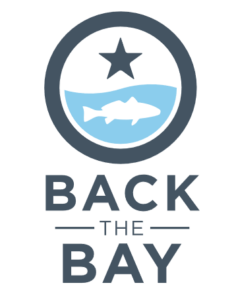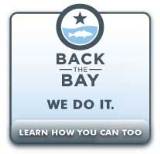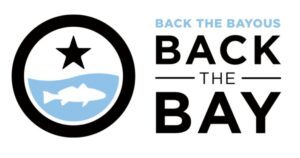About Back the Bay
Mission
The preservation of Galveston Bay for Generations to come.

Our Purpose
To provide comprehensive ecosystem management through collaborative partnerships and to ensure preservation of the bay’s multiple uses.

Back the Bay was created by the Galveston Bay Estuary Program as an education campaign to engage and inspire the Houston-Galveston community in conservation through everyday lifestyle and habit changes. Learn about how Back the Bay has evolved over the years.

Galveston Bay Council members and stakeholders named the lack of public awareness as one of the greatest challenges facing the Bay’s future health. Addressing this challenge was a very high priority in the Galveston Bay Strategic Action Plan (2005-2015).

The Galveston Bay Estuary Program created Back the Bay to help address this priority by increasing awareness about the Bay’s value among the public. To gauge its effectiveness, extensive research was conducted pre and post pilot and throughout campaign implementation to measure outcomes and to define and redefine target audiences and messages. A small pilot-campaign began in Pearland and Friendswood, Texas, to decide what messages were most impactful.

Back the Bay significantly increased media exposure though a website campaign and messaging adapted to recreational uses of Galveston Bay like hunting, boating, and fishing. A partnership with Houston NBC affiliate KPRC Channel 2 created TV banners that scrolled the Back the Bay logos and website across targeted programming.

Back the Bay added Back the Bayous to the campaign to help communities feel more connected to Galveston Bay. The message was distributed at events throughout the Houston-Galveston region on stickers, reusable totes, posters, and in media. The Back the Bay website was also updated and included specific tips and resources on how the public could help preserve Galveston Bay.

Back the Bay expanded its outreach with 14 TV stations providing 30-second highlights on trash and marine debris and additional radio spots broadcast on 13 radio stations including Spanish language media.

Back the Bay campaign has officially transformed to a resource page where the community and partners can find:




Galveston Bay 101
What is an Estuary
An estuary is an area where freshwater flowing from rivers, bayous, and streams blends with salty seawater. The mixing of the two kinds of water results in a rich environment for an abundance of plants and animals. Many marine organisms—such as shrimp, oysters, crabs, and numerous fish species—find food and shelter in the estuary during their juvenile phases.
The Galveston Bay Estuary Program focuses on the lower Galveston Bay watershed, which includes the surface water below Lake Livingston and Lake Houston; all of which flows into Galveston Bay.

With an area of over 600 square miles, Galveston Bay is the largest bay in Texas and 7th largest in the U.S.
Over 50% of the population of the state of Texas lives in the Galveston Bay Watershed, with over 5.5 million people in the Houston-Galveston region.
Galveston Bay has over 230 miles of shoreline and an average depth of seven feet.
Galveston Bay is fed by the Trinity River and San Jacinto River watersheds.
The upper portions of the Trinity River watershed reach almost to the Texas-Oklahoma border.
About the Galveston Bay Estuary Program (GBEP)
GBEP is a non-regulatory program of the Texas Commission on Environmental Quality. It was established in 1989 as part of the U.S. EPA’s National Estuaries Program (NEP) and is one of 28 NEPs, and one of only two in Texas.
GBEP primarily operates in the lower Galveston Bay watershed which is defined as the 4,000 square-mile area draining to the bay downstream of two major impoundments: Lake Houston on the San Jacinto River, and Lake Livingston on the Trinity River. Due to its proximity to Galveston Bay, the lower portion of the watershed has a more direct influence on the water quality of the bay, but the combination of human and agricultural influences from the upper watershed also directly contributes to the water quality of the system. Learn More About the Galveston Bay Estuary Program at https://gbep.texas.gov.
The Galveston Bay Plan, 2nd Edition (GBP) is the comprehensive conservation and management plan that serves as a roadmap for the future health of Galveston Bay allowing GBEP and partners to fulfill its purpose and achieve its goals.
The GBP serves as a guiding document, identifying environmental issues and suggesting action-based solutions to achieve restoration and preservation of the bay. With the help of GBEP stakeholders, partners, non-profit organizations, and state and federal agencies, the GBP developed four categories of focus, or Plan Priorities, which address the most pressing issues facing Galveston Bay.
PLAN PRIORITY
1
PLAN PRIORITY
2
PLAN PRIORITY
3
COMMUNITIES
PLAN PRIORITY
4

